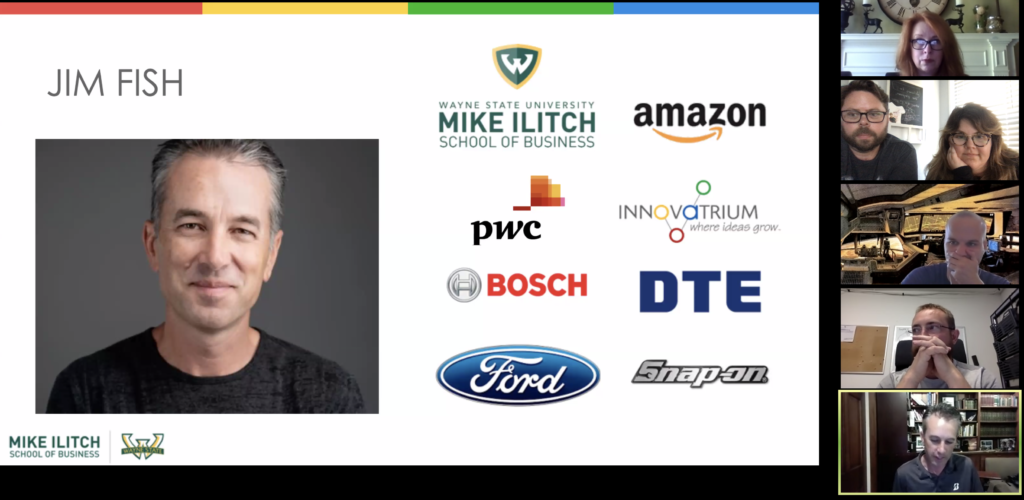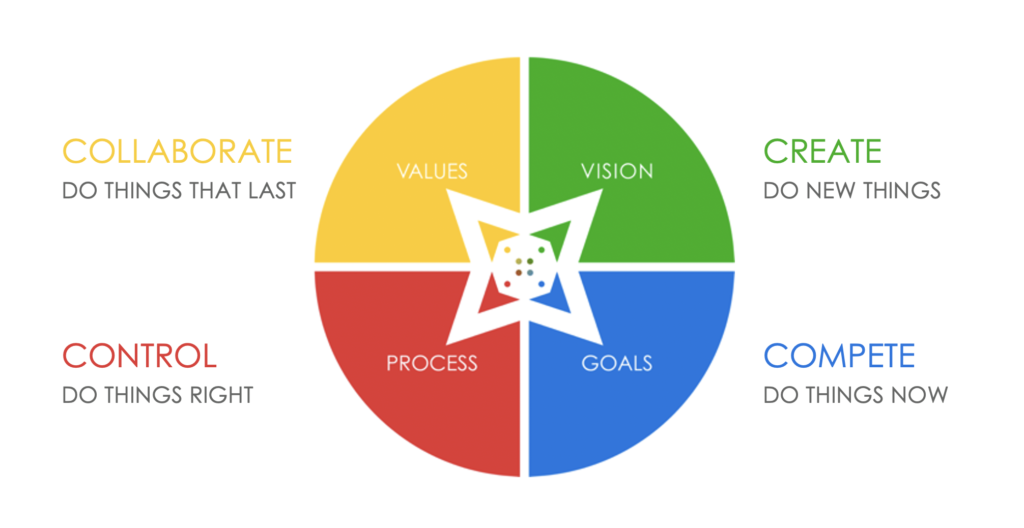Amatis Culture Series: Creating tension and value with Innovator Jim Fish
“Everywhere I go, I create tension.”
This mantra may sound a little… tense. But Jim Fish’s advice to the Amatis team this summer was to embrace the tension, because that’s where thought diversity and value creation live.
You can accept tension in your core values, and that’s a good thing. Recognize your own tendencies, and that conflict is required for success, but the conflict must be respectful. That means you must respect each other deeply. You still need empathy to have the ideal conflict. Understanding that the perspectives are in fact, different, is where the magic is.” — Jim Fish
Jim joined the Amatis team to talk about company culture and the Competing Values Framework. We’ve been spending our summer learning from inspiring outsiders who have graciously accepted our invitation to talk and learn from. Jim brought his background in power engineering and lighting research, 22 patents, experiences at Ford, DTE, Snap-on, Bosch, University of Michigan Innovatrium and Amazon, and his professor lecture skills probably gleaned while teaching at Wayne State University the past few years.

Ownership and Candor
Of the Amatis Target Culture Principles, we think Jim embodies ownership and candor. Jim broke these down for us.
“Ownership is about creating value for the customer that manifests in sustainable growth or sustainable position for Amatis,” Jim said. “Candor is a way in which you will create value. These have tension. For example: You always have this tension between growing and experimenting, but still need to standardize and have some level of process to move forward. There is value creation and value destruction when the tension gets to be too much between these two.”
Competing Values Framework
Jim brought the Competing Values Framework with him, a model that’s been put into 250 of the Fortune 500 companies. The framework facilitates thinking about the tensions that create value in different ways and how it’s introduced into a business.

In this framework, companies create value in four ways:
- They create — they do new things.
- They compete — they go fast and execute. Jim lives here, in the ownership and candor dimension.
- They control — they do things right, with process and standardization.
- They collaborate — they do things that last, the sustainable part of your culture, the glue that holds things together when you start to really feel things coming to the edge.
These quadrants are oppositional. The opposite of creating is controlling. The opposite of competing is to collaborate. And herein lies the tension.
One key lesson was to gravitate toward our opposing colors for thought diversity. Another was to evaluate if we’re doing what we’re naturally wired and energized to be doing.
“Are you a creative person, but you’re doing accounting? Perhaps you’re not a brilliant detail thinker in accounting, but you’ve been doing it for 30 years and gritted your teeth and got really good at it, and now you’re a CFO. That’s called role efficacy. You just get really good at something, not because you’re wired that way,” Jim said. “The other is called self-selection. It means overtime, you’re an artist and you’re in accounting, and you noticed we need someone to work in managerial accounting. Next thing you know, you’re in a different part of the company, and you’re taking chances and you find yourself so far from the beginning and in something that better fits your style.”
Breaking it down at Amatis
Jim challenged the Amatis team to look at our colors and to think about when we are energized as individuals:
“What are you brilliant at? The worst thing you can do is dull somebody’s blade to be uniquely capable in their natural tendency space. Even 20 percent of your dream job will still reek of stuff you don’t want to do. Where do you focus your time in adding value? Follow your passion. You can be brilliant at a red engineering task when you are a green person.”
Here is a look at the Amatis and Nextek Power Systems partner teams and how our competing values colors breakout:
| Red | Blue | Green | Yellow | Brilliant at: | |
|---|---|---|---|---|---|
| Sebastien Gouin-Davis | X | Relentless prioritization; making hard decisions | |||
| Paisley Mackie | X | Spatial memory | |||
| Christian Gouin-Davis | X | Getting to the bottom of complext problems | |||
| Eva Gouin-Davis | X | Optimizing systems; organizing | |||
| Wendle Whiting | X | Anticipating trends; problem solving | |||
| Jon Baiardo | X | Technical design solutions | |||
| Miles Hill | X | Building sustainable tech | |||
| Alison Accavitti | X | Building brands and teams | |||
| Rana Mohamed | X | Process and collaboration | |||
| Cedric Kennedy | X | Optimism; people and relationships | |||
| Nick Theoret | X | Resourcefulness; driven | |||
| Cavan Corcoran | X | People and relationships | |||
| Ashley Tusler | X | Problem solving; hands-on learning / building | |||
| Karl Heuksinkveld | X | Learning fast; creative solutions | |||
| Jeff Daudert | X | People and relationships | |||
| Joey Stempky | X | Simplifying | |||
| Laura Bergsman | X | Listening; attention to detail |
And here is a look at our Target Culture Principles using the Competing Values Framework:
| Red | Blue | Green | Yellow | |
|---|---|---|---|---|
| Respect | X | |||
| Candor | X | |||
| Humility | X | |||
| Ask Questions | X | |||
| Build Stuff | X | |||
| Have Fun | ||||
| Take Pride | ||||
| Leave everything better than you found it | X | |||
| Maximum Effort | X | |||
| Ownership | X |
Analysis: Light on principles in the red quadrant, well balanced in the others. Some of our principles arguably span across many colors.
Thank you, Jim, for this week’s inspiration!
Sincerely,
The Amatis and Nextek teams

